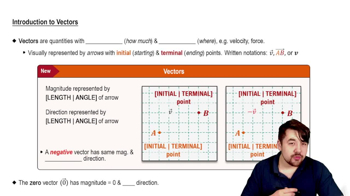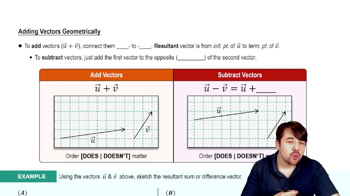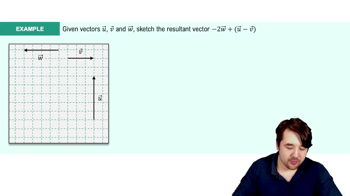Table of contents
- 0. Fundamental Concepts of Algebra3h 29m
- 1. Equations and Inequalities3h 27m
- 2. Graphs1h 43m
- 3. Functions & Graphs2h 17m
- 4. Polynomial Functions1h 54m
- 5. Rational Functions1h 23m
- 6. Exponential and Logarithmic Functions2h 28m
- 7. Measuring Angles40m
- 8. Trigonometric Functions on Right Triangles2h 5m
- 9. Unit Circle1h 19m
- 10. Graphing Trigonometric Functions1h 19m
- 11. Inverse Trigonometric Functions and Basic Trig Equations1h 41m
- 12. Trigonometric Identities 2h 34m
- 13. Non-Right Triangles1h 38m
- 14. Vectors2h 25m
- 15. Polar Equations2h 5m
- 16. Parametric Equations1h 6m
- 17. Graphing Complex Numbers1h 7m
- 18. Systems of Equations and Matrices3h 6m
- 19. Conic Sections2h 36m
- 20. Sequences, Series & Induction1h 15m
- 21. Combinatorics and Probability1h 45m
- 22. Limits & Continuity1h 49m
- 23. Intro to Derivatives & Area Under the Curve2h 9m
14. Vectors
Geometric Vectors
Struggling with Precalculus?
Join thousands of students who trust us to help them ace their exams!Watch the first videoMultiple Choice
Determine if the following statement is true or false: Acceleration is a vector.
A
True
B
False
C
Cannot be Determined
 Verified step by step guidance
Verified step by step guidance1
Understand the concept of a vector: A vector is a quantity that has both magnitude and direction.
Identify the characteristics of acceleration: Acceleration is the rate of change of velocity with respect to time.
Recall that velocity is a vector quantity because it has both magnitude (speed) and direction.
Since acceleration describes how velocity changes, it must also have both magnitude and direction.
Conclude that acceleration is indeed a vector because it possesses both magnitude and direction, similar to velocity.

 3:48m
3:48mWatch next
Master Introduction to Vectors with a bite sized video explanation from Patrick
Start learning





